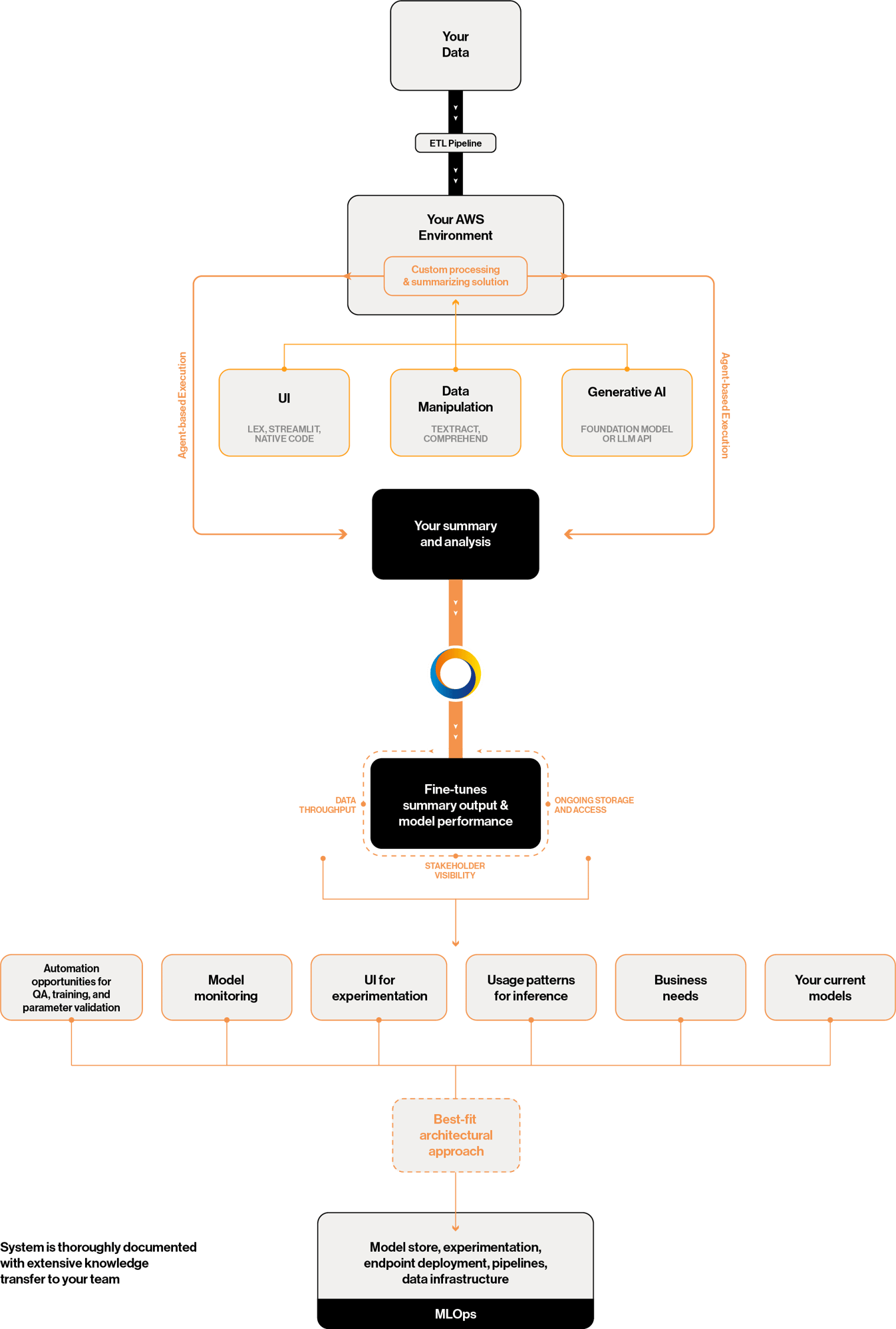Intelligent Document Processing

What is IDP?
Are you processing large amounts of documents and need them quickly analyzed while maintaining accuracy? Intelligent document processing (IDP) works with document data using machine learning techniques, AWS Services like Textract and Comprehend, data analytics, and large language models to help with tasks which might otherwise require human readers or writers.
IDP FastTrack
Implement scalable, production-ready intelligent document processing with our IDP FastTrack. We leverage extensive experience with complex documents and a library of configurable accelerator modules to automate data extraction, reduce manual effort, and turn your unstructured data into business insights.
-
Intelligent Document Processing (IDP)
Turn your unstructured documents into actionable data. Automate data extraction to reduce manual effort and unlock critical insights.
Am I a fit for Generative AI?
Common Verticals
-
Legal
Services -
Fintech &
Finance -
Healthcare &
Life Sciences
Solution Fit Criteria
- You’re working with large volumes of documents (paper or digital)
- Handling your document data requires reading comprehension and impacts a business objective
- Data is sensitive or subject to compliance requirements
- Data needs subject matter expertise
- Your current process needs a written output (i.e., summary, key text extraction, comparison with other text(s))
- Your current process is human-driven, manual, or at low levels of automation (Excel-driven)
- Your current process is costly
- The throughput of your current process is too slow for your objectives
- Your current process requires external contracting / offshoring or other factors of additional cost
Benefits of Intelligent Document Processing with Generative AI
-
No Manual Sorting
Removes the manual labor of document processing
-
Improved Accuracy
Tunable to exceed human readers’ accuracy / consistency
-
Scales Efficiently
A larger throughput of documents takes more compute, not more labor
-
Greater Privacy
Less human intervention with sensitive data / greater data privacy
Our process


Get Your Pilot Launched
Over a 4 to 6 week period, we’ll construct an engagement to get you up and running with IDP. By the end, you’ll have a pilot solution deployed in your environment that’s been designed to accomplish your objectives and demonstrate the potential of a fully scaled architecture.
Design Workshop
(1-2 weeks)
Pilot Deployment
(3-4 weeks)
At the end of the design phase, you get:
- Data and infrastructure design
- Use case prioritization and roadmap
- Defined business use case
- Defined success criteria
- A proposed candidate solution for the minimum viable product
- A high-level solution architecture using AWS services 3rd party software (foundation models)
- A development plan for the Pilot Deployment
- Preliminary TCO estimates
At the end of our Pilot phase, you get:
- A pilot deployed in your AWS development environment
- The solution architecture documentation
- A plan to build for scale as a production-ready solution
- A refined TCO estimate for AWS and 3rd party services
- A summary of success criteria met and recommendations for “go/no-go”

